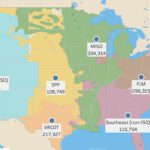The Federal Energy Regulatory Commission (FERC) on Thursday proposed four reforms intended to reduce the time and cost to process transmission interconnection requests from generating facilities of 20 MW or smaller. The reforms would boost reliability by increasing energy supply and remove hurdles in the development of new renewable power sources, FERC said.
The reforms outlined in a Jan. 17 Notice of Proposed Rulemaking (NOPR) were driven by market changes "spurred in part by state renewable energy goals and policies," FERC said. They affect FERC’s Small Generator Interconnection Procedures (SGIP) and Small Generator Interconnection Agreement (SGIA), which essentially set conditions for interconnecting facilities of 20 MW or smaller.
The NOPR points out that since 2005, when the SGIP and SGIA were established, 29 states and the District of Columbia have established renewable portfolio standards, while eight states have renewable portfolio goals (for more information, see POWER’s December 2012 infographic, "THE BIG PICTURE: A Renewables Quest" ). Some states have also implemented distributed generation "carve-outs," in which a percentage of the total state renewable portfolio standard must come from distributed generation, it notes. California, in particular, is embracing distributed generation (see “Distributed Generation: California’s Future” in the January issue of POWER).
"Recent Commission filings have referenced higher volumes of small generator interconnection requests. Additionally, state renewable portfolio standards are driving small generator interconnection requests and influencing state policies," the NOPR says. "The Commission preliminary finds that the reforms proposed in this NOPR are needed to ensure that the rates, terms, and conditions of interconnection service for Small Generating Facilities are just and reasonable and not unduly discriminatory or preferential."
According to FERC, the first reform would allow interconnection customers to request from transmission providers a pre-application report to help them better evaluate points of interconnection before submitting a formal interconnection request. "This added transparency could increase the efficiency of the interconnection process for both transmission providers and interconnection customers," FERC said.
The second reform would revise the current 2-MW threshold for participation in the "Fast Track Process" under section 2 of the SGIP, basing it instead on individual system and resource characteristics, up to a limit of 5 MW.
A third reform would revise the customer options meeting and supplemental review for projects that fail the Fast Track screens that identify reliability or safety issues.
Finally, the NOPR would revise the SGIP Facilities Study Agreement by giving interconnection customers an opportunity to provide written comments on the upgrades that are necessary for the interconnection. "The Commission believes transmission providers should make the final decision on required upgrades, but is concerned that failing to allow customers to review and comment on the upgrades may result in unjust and unreasonable costs," FERC said.
Comments are due 120 days after publication in the Federal Register. The commission said, however, that because of the technical nature of the reforms, it has directed staff to convene a workshop before the end of the comment period.
The timing of the NOPR is "particularly appropriate," said FERC Commissioner Cheryl A. LaFleur in a statement. “I have frequently observed that one of the Commission’s most important responsibilities is to determine whether our existing policies remain just, reasonable, and not unduly discriminatory in light of ongoing changes in the nation’s power supply. As the country’s generation mix continues to evolve, the Commission must ensure that its policies do not saddle customers with unnecessary costs or raise artificial barriers to new sources of energy.”
Sources: POWERnews, FERC










